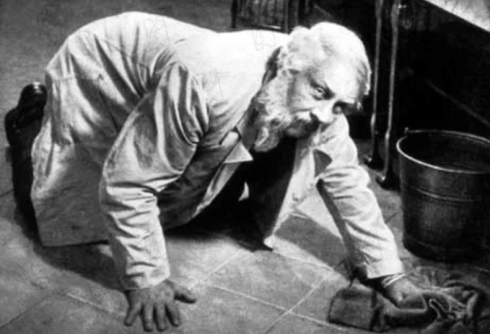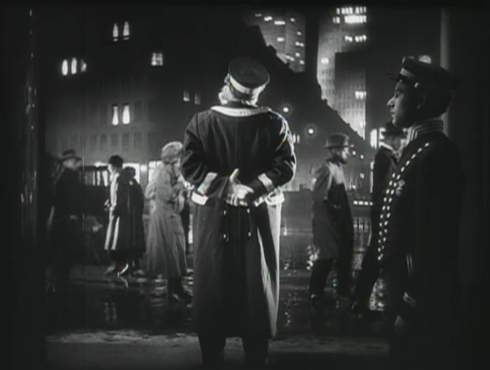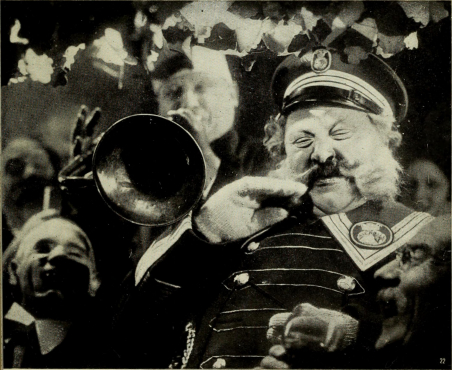FW Murnau: Der Letzte Mann (DE 1924)
FW Murnau: Der Letzte Mann (D 1924) - UA
Saturday, 4 November 2023, 18.00
Stuttgarter Philharmoniker - Liederhalle, Stuttgart
"DER LETZTE MANN" almost entirely avoids intertitles, making it the first silent film to successfully achieve this. This accomplishment is attributed not only to Emil Jannings' impressive performance but also to the technical virtuosity of the film itself. Karl Freund's camera moves "unleashed" through spaces, visualizing the protagonist's inner life through dream sequences, superimpositions, and special effects. Such a strong subjectification of the camera's perspective had not been seen in German silent cinema until then.
Giuseppe Becce's music is among the few surviving film scores from the silent film era. It is preserved as a piano score and a violin part. Acts 2, 4, and 5 are fully notated, while Acts 1 and 3 contain references to pieces by other composers alongside written-out passages. For Act 6, Becce recommends only five shimmies.
Of particular interest are the passages written by Becce. As Detlev Glanert writes, "...Becce made an effort towards a continuous composition, which for us is the true rediscovery; Acts 2 to 5 are fully composed except for 5 minutes, with deliberately placed main themes, leitmotifs, and leading sounds. Especially Acts 2, 4, and 5 exhibit motifs and melody parts of great potential, either waiting for further musical development or sounding like a commentary on something not yet executed. The conciseness of these passages is surprising, and in its best moments, Becce achieves a musical flexibility equal to that of the film, which gracefully and intelligently revolves around visual events using its motifs and insertions." What remains transparent in the newly created pastiche composition is Becce's typical compilation technique, as Detlev Glanert plays with the existing quotations (e.g., the wedding march). Starting from this supply of themes and functional connections, Detlev Glanert has undertaken an arrangement in which he attempts, almost 80 years later, to implement and complete what Becce envisaged as individual, expressive accompaniment to this classic of German silent cinema.




